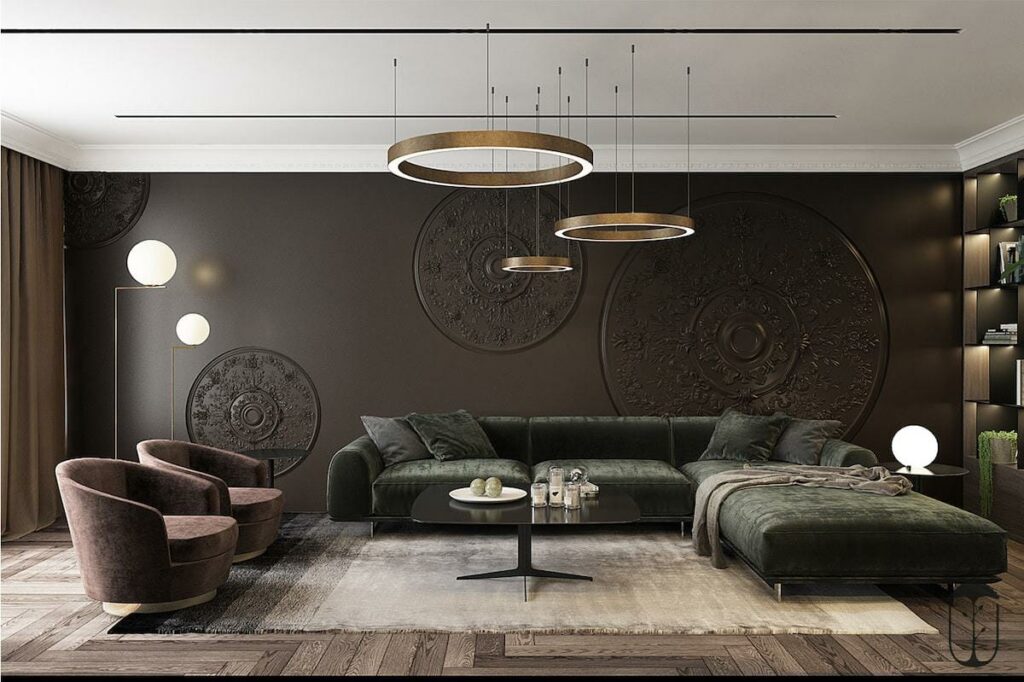Meta Description:
Learn the essential factors for designing effective lighting that balances functionality, aesthetics, and energy efficiency to enhance your space. Discover the best lighting options for every room in your home.
1. Introduction: The Importance of Effective Lighting Design
Lighting is one of the most crucial aspects of any design project. Whether it’s for a residential home, an office space, or commercial settings, good lighting has the power to completely transform a room’s atmosphere. But lighting isn’t just about creating a visually appealing space – it’s also about functionality and energy efficiency.
1.1 The Role of Lighting in Design
Lighting serves as a key element in interior design by defining the mood and purpose of a space. It enhances the room’s function and aesthetic by highlighting the best features and providing the right ambiance.
1.2 Why Lighting is Essential for Functionality and Aesthetics
Proper lighting is crucial for both functionality and aesthetics. It illuminates important areas, creates focal points, and helps shape the space, making it both livable and visually stimulating.
1.3 Key Benefits of Thoughtful Lighting Design
- Improves visibility for tasks and activities
- Enhances the beauty of architectural features
- Boosts mood and comfort
- Increases energy efficiency
- Promotes safety in both residential and commercial settings
1.4 Overview of the Key Factors Influencing Lighting Choices
Several factors impact lighting design choices, including room size, the intended function of the space, light color temperature, and energy efficiency considerations.
1.5 The Impact of Lighting on Energy Efficiency and Sustainability
Sustainable lighting options, like LED bulbs, reduce energy consumption and lower electricity bills. Properly designed lighting also reduces the carbon footprint, supporting eco-friendly living.
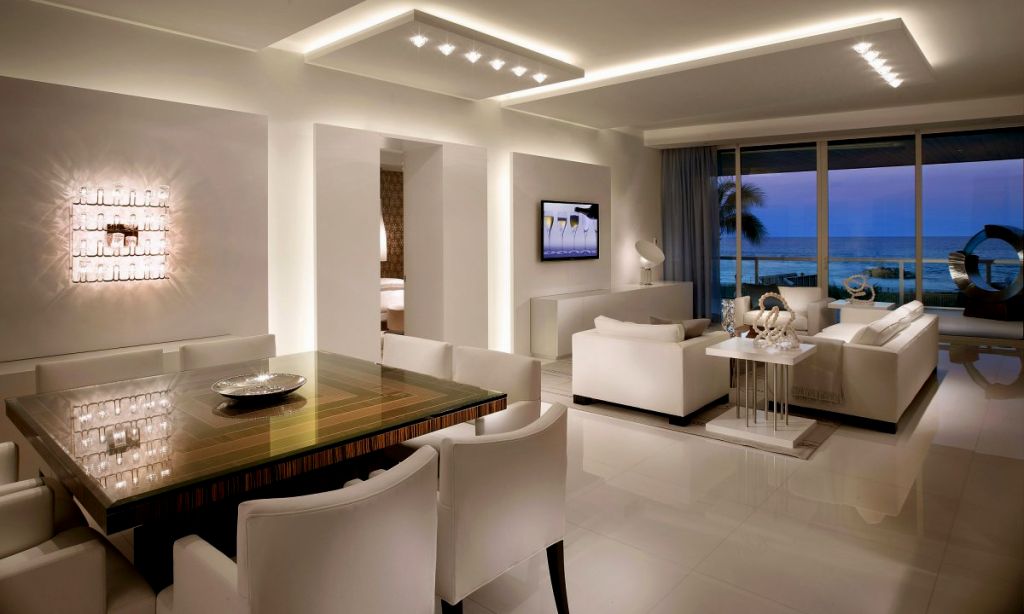
2. Understanding Different Types of Lighting
Choosing the right type of lighting is fundamental to creating a space that’s both functional and beautiful.
2.1 Ambient Lighting: Creating the Foundation
Ambient lighting, or general lighting, creates an overall illumination for the entire room. It is typically provided by ceiling lights, chandeliers, or recessed lighting.
2.2 Task Lighting: Illuminating Specific Work Areas
Task lighting focuses on providing adequate light for activities such as reading, cooking, or working. Desk lamps, under-cabinet lighting, and pendant lights are common choices.
2.3 Accent Lighting: Highlighting Architectural and Decorative Features
Accent lighting draws attention to specific features of a room, such as artwork, sculptures, or architectural details. Spotlights and track lights are excellent options for accent lighting.
2.4 Decorative Lighting: Adding Style and Character
Decorative lighting serves both as a source of illumination and an aesthetic element. Chandeliers, pendant lights, and unique lamps enhance the style of the space.
2.5 Choosing the Right Type for Your Space
Consider the room’s function, size, and aesthetic to choose the appropriate lighting. For example, use soft ambient lighting in living rooms and task lighting in kitchens or home offices.
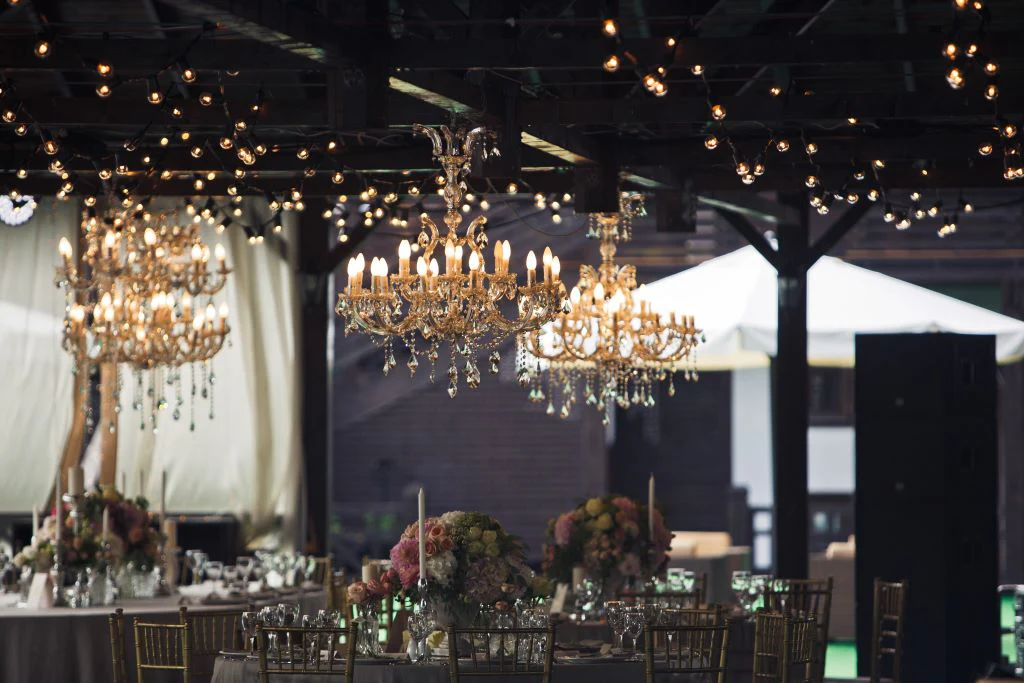
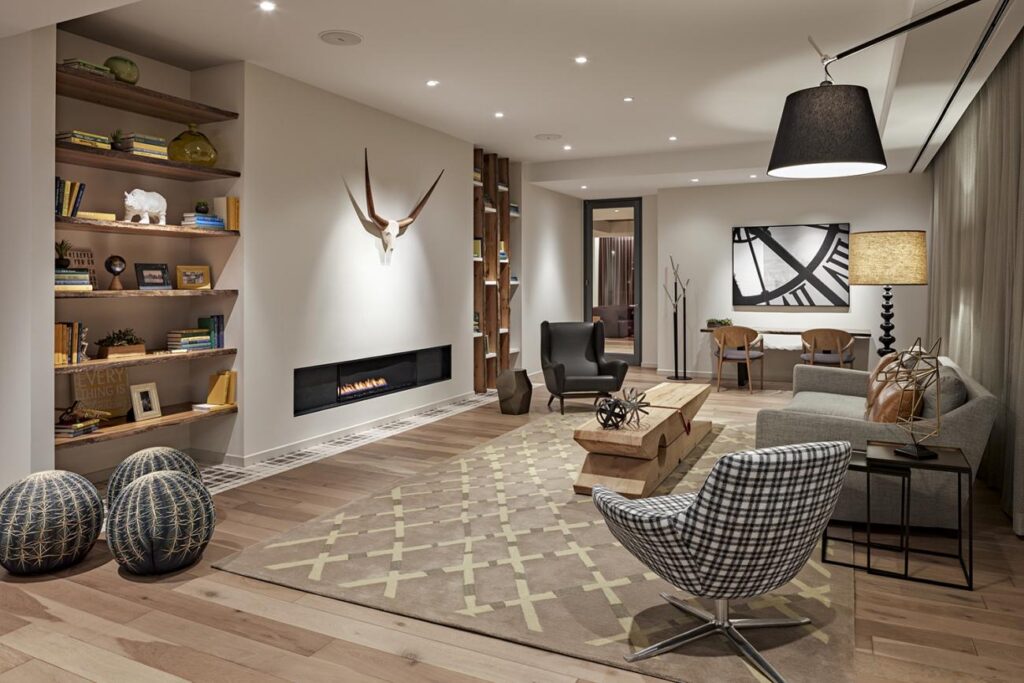
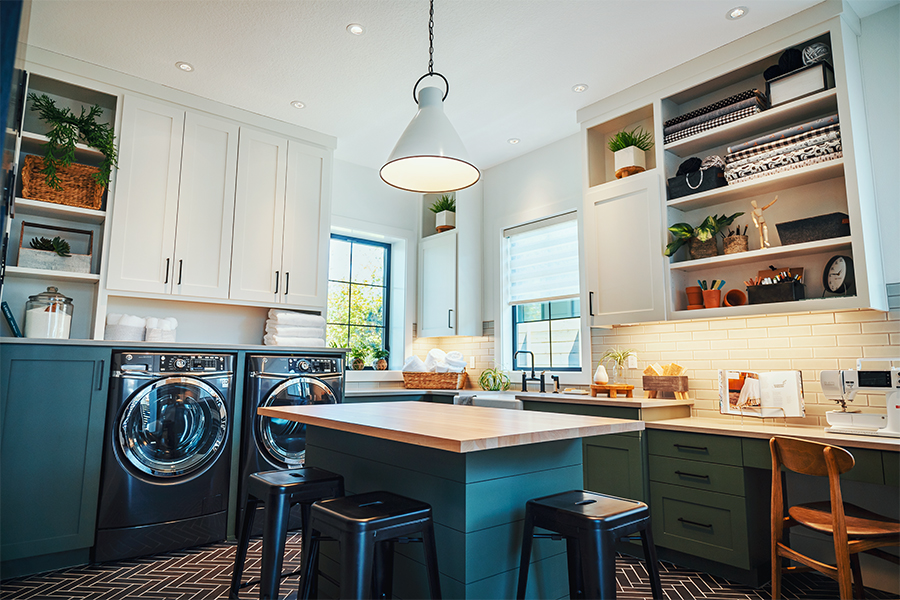

3. Consider the Space: Room Dimensions and Layout
Lighting design must account for the size and layout of the room, ensuring optimal illumination for both aesthetic and functional purposes.
3.1 How the Size of a Room Influences Lighting Choices
In smaller rooms, it’s essential to use space-efficient lighting, while larger rooms may need multiple light sources to achieve uniform brightness.
3.2 Adjusting Lighting Based on Room Function
The lighting needs of a kitchen differ from those of a living room. Kitchens require task lighting for cooking, while living rooms benefit from layered ambient lighting.
3.3 Lighting Strategies for Open-Plan Spaces
In open-plan spaces, use zoning techniques to create separate areas with distinct lighting, enhancing both functionality and style.
3.4 How to Design Lighting for Small Rooms
In small rooms, use light-colored walls and mirrors in combination with strategically placed lighting to create the illusion of more space.
3.5 Using Lighting to Define Zones Within Larger Spaces
Use a combination of ambient, task, and accent lighting to visually separate different areas in large rooms or open spaces.
4. The Impact of Light Temperature and Color
Light temperature and color have a significant effect on both mood and the perceived size of a space.
4.1 Understanding the Color Temperature Scale (Kelvin)
The Kelvin scale measures light color, from warm (lower Kelvin) to cool (higher Kelvin). Choosing the right color temperature for a room is essential for setting the desired mood.
4.2 Warm vs. Cool Lighting: Setting the Mood
- Warm lighting (below 3000K) creates a cozy, intimate ambiance, ideal for living rooms and bedrooms.
- Cool lighting (above 5000K) promotes focus and alertness, making it suitable for workspaces and kitchens.
4.3 The Influence of Light Color on Perception of Space
Warmer lights can make a space feel cozy and intimate, while cooler tones can make a space feel more open and expansive.
4.4 How Light Color Impacts Productivity and Comfort
Cool lighting encourages focus, while warmer lighting improves relaxation. Adjusting light color according to the activity can boost productivity and well-being.
4.5 Choosing the Right Light Temperature for Different Areas
- Living Room: Warm (2700K-3000K)
- Kitchen: Neutral (3500K-4000K)
- Workspaces: Cool (5000K-6500K)
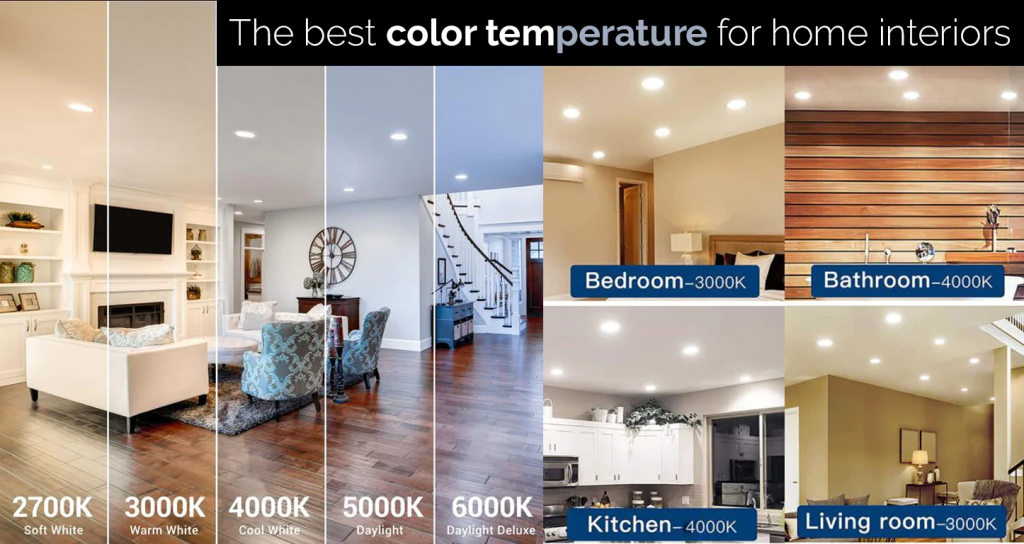
5. Light Distribution and Layering for Balanced Illumination
Effective lighting design isn’t just about the type of lighting you choose; it’s also about how you distribute light across the room to create a balanced and welcoming atmosphere.
5.1 The Importance of Even Light Distribution
Uneven lighting can cause dark spots or overly bright areas, making a room uncomfortable. Aim for a uniform distribution of light across the space to avoid these issues.
5.2 Layering Light for Depth and Dimension
Layering different types of lighting – ambient, task, and accent – can add depth to a space. This technique helps create a dynamic and visually interesting environment, providing both functionality and style.
5.3 Avoiding Harsh Shadows and Glares
Excessive direct lighting can cause harsh shadows or glare. To avoid this, position light sources carefully and opt for diffused lighting solutions that soften the light and reduce eye strain.
5.4 Using Dimmers for Adjustable Lighting
Dimmers allow you to adjust the intensity of the light based on the time of day or the activity. Use dimmable lights to create a customizable and adaptable lighting environment.
5.5 Incorporating Different Light Sources to Create Harmony
Instead of relying on a single light source, combine multiple light sources in different areas of the room. This approach creates harmony and ensures that each part of the room is illuminated appropriately.
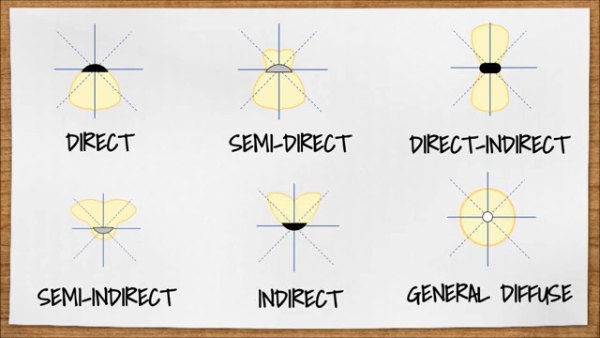
6. Energy Efficiency and Sustainable Lighting Solutions
As energy efficiency becomes a priority, it’s important to choose lighting solutions that help conserve energy while still providing effective illumination.
6.1 Benefits of Energy-Efficient Lighting
Energy-efficient lighting reduces electricity consumption, lowers your carbon footprint, and saves money in the long term. LED bulbs and CFLs are excellent choices for reducing energy usage.
6.2 LED Lighting: A Sustainable Choice
LED lighting offers one of the best options for sustainable illumination. These lights last longer, use less energy, and emit fewer greenhouse gases compared to traditional incandescent bulbs.
6.3 Choosing Eco-Friendly Lighting Fixtures and Bulbs
When selecting bulbs, opt for energy-efficient options like LEDs or CFLs. Additionally, choose lighting fixtures made from sustainable materials to further support eco-friendly design.
6.4 Lighting Control Systems to Reduce Energy Consumption
Consider incorporating lighting control systems like motion sensors, timers, and smart lighting that adjust based on the room’s occupancy and time of day to further reduce energy consumption.
6.5 The Long-Term Cost Savings of Efficient Lighting
While energy-efficient lighting products might cost more initially, the savings over time are significant due to lower energy bills and reduced need for bulb replacements.
7. Smart Lighting and Technology Integration
With the rise of smart home technology, lighting is becoming more versatile, user-friendly, and energy-efficient. Smart lighting solutions can improve comfort and convenience.
7.1 The Rise of Smart Lighting Systems
Smart lighting systems are designed to be controlled remotely via smartphone apps or voice assistants. This allows users to adjust lighting settings for optimal comfort, energy efficiency, and convenience.
7.2 Remote Control and Automation for Convenience
Automating your lighting system allows for convenient control of lights in any room. Set schedules, dim lights, or change color temperatures remotely to suit your preferences or activities.
7.3 Enhancing Security and Ambiance with Smart Lighting
Smart lighting can enhance home security by automatically turning lights on or off at preset times, creating the illusion that someone is at home. Additionally, customizable lighting settings can adjust the ambiance for various occasions.
7.4 Integrating Lighting with Home Automation Systems
Integrate lighting into your home’s automation system to synchronize lighting with other devices, such as thermostats, blinds, and alarms, to create a seamless, smart home environment.
7.5 How Smart Lighting Impacts Energy Savings
Smart lighting offers great energy-saving potential. It allows lights to be turned off automatically when rooms are unoccupied or set to dim based on the time of day, reducing overall energy consumption.

8. Safety and Comfort Considerations in Lighting Design
When designing lighting for a space, it’s essential to prioritize comfort, safety, and accessibility to create an environment that is both inviting and secure.
8.1 Avoiding Eye Strain and Discomfort
Harsh lighting or overly bright spaces can cause eye strain. Ensure the light levels are appropriate for the room’s function and use softer, diffused lighting to minimize discomfort.
8.2 Ensuring Safety with Adequate Lighting in Critical Areas
Key areas such as stairways, hallways, kitchens, and bathrooms should have sufficient lighting to prevent accidents. Use task lighting or bright overhead fixtures to ensure safety.
8.3 Lighting for Accessibility and Inclusivity
Lighting design should consider the needs of people with disabilities or limited mobility. Ensure that critical areas are well-lit, and incorporate features like motion-sensor lighting for ease of access.
8.4 The Importance of Proper Lighting for Elderly and Visually Impaired Individuals
For elderly individuals or those with visual impairments, provide brighter, high-contrast lighting to ensure safe navigation and comfort. Warm lighting combined with task lighting can improve visibility.
8.5 Using Lighting to Reduce Risks of Accidents in the Home or Workplace
Proper lighting can significantly reduce the risk of accidents in the home or workplace. Ensure pathways and commonly used areas are well-lit, with additional lighting around hazards such as stairs or wet surfaces.
9. Trends and Innovations in Modern Lighting Design
The lighting industry is evolving rapidly, with innovations that enhance both aesthetics and functionality.
9.1 Current Trends in Lighting Design
Modern lighting is moving towards smart, energy-efficient solutions, offering versatility and eco-friendly features.
9.2 LED Technology Advancements and Future Developments
LED technology continues to advance, offering higher efficiency, longer life spans, and more vibrant color choices. Innovations in smart LED lighting are changing how we interact with light.
9.3 Sustainable and Smart Lighting Trends
Sustainability is a key trend, with more focus on energy-efficient systems, recyclable materials, and integrated smart features that help save energy and reduce costs.
9.4 How Design Aesthetics Are Evolving with New Lighting Solutions
Lighting fixtures are now designed to be both functional and stylish. Minimalist designs, pendant lights, and customizable lighting solutions are leading the way.
9.5 The Role of Customization and Flexibility in Lighting Design
With smart and adjustable lighting systems, homeowners can customize the lighting environment to suit their specific needs and preferences.

10. Conclusion: Bringing It All Together – A Holistic Approach to Lighting Design
Effective lighting design is a balance of functionality, aesthetics, and energy efficiency. By understanding the factors that influence lighting choices, you can create spaces that are both beautiful and practical.
10.1 The Importance of Planning and Designing Lighting Thoughtfully
Thoughtful lighting design enhances every space. Planning with purpose ensures that lighting supports both the tasks you perform and the atmosphere you wish to create.
10.2 Achieving the Perfect Balance Between Functionality and Aesthetics
The ideal lighting solution considers both form and function. Striking the right balance between these elements is key to creating a harmonious space.
10.3 Tips for Creating a Timeless Lighting Design
Focus on flexibility, energy efficiency, and balance. Choose fixtures that offer versatility and longevity, and design with the future in mind.
10.4 How to Adapt Lighting to Meet Personal and Professional Needs
Customize lighting to suit personal tastes and functional needs, whether for work, relaxation, or social gatherings.
10.5 Promoting Holaled: Holaled’s Commitment to High-Quality, Energy-Efficient Lighting Solutions
At Holaled, we are committed to providing top-quality, sustainable LED lighting solutions. Our products are designed to meet your functional and aesthetic needs while supporting energy efficiency and sustainability.
Frequently Asked Questions (FAQ)
Q1: What is the best type of lighting for my living room?
A1: For a living room, a combination of ambient, task, and accent lighting works best. Use ambient lighting for general illumination, task lighting for specific activities like reading, and accent lighting to highlight decorative elements such as artwork.
Q2: How do I choose the right light temperature for my home?
A2: Light temperature is measured in Kelvins (K). For relaxing spaces like the bedroom or living room, choose warm white (2700K-3000K). For workspaces, cool white or daylight (4000K-5000K) provides a more focused, energizing light.
Q3: Can smart lighting help save energy?
A3: Yes, smart lighting can significantly reduce energy consumption. With features like motion sensors and automated schedules, smart lights ensure that lights are only on when needed, helping to lower energy bills.
Q4: How can I avoid harsh lighting in my workspace?
A4: To avoid harsh lighting, choose a combination of diffuse light sources, such as ceiling lights with soft diffusers or desk lamps with adjustable brightness. Avoid overhead lights directly above your workstation.
Q5: What are the benefits of LED lighting over traditional bulbs?
A5: LED lights are more energy-efficient, last longer, and provide better light quality compared to traditional incandescent or fluorescent bulbs. They also emit less heat, making them safer and more cost-effective in the long run.
Q6: How do I ensure safety with lighting in high-traffic areas?
A6: In high-traffic areas, such as hallways and stairways, use bright, well-distributed lighting. Consider using motion sensors or automatic timers to keep lights on when needed and ensure safe navigation.
Q7: Can lighting affect my mood?
A7: Yes, lighting can significantly impact your mood. Warm lighting promotes relaxation, while cool lighting enhances focus and alertness. Adjusting lighting to suit your activities can help improve comfort and productivity.
Q8: Is dimmable lighting a good option for my home?
A8: Dimmable lighting offers flexibility and can help set the right mood for different activities. It allows you to adjust the light intensity, making it perfect for creating ambiance or reducing brightness during certain tasks.

